MVC Drain
The MVC Drain command request issues a direct request to ELS to run the MVCDRain command. MVC Drain recalls all current and scratched VTVs from an MVC and, optionally, virtually ejects the MVC, making it unavailable for VSM use without physically ejecting it from the library
Select Management and MVC Drain on the navigation tree to display this pane.
Select the tapeplex to drain on the drop-down list.
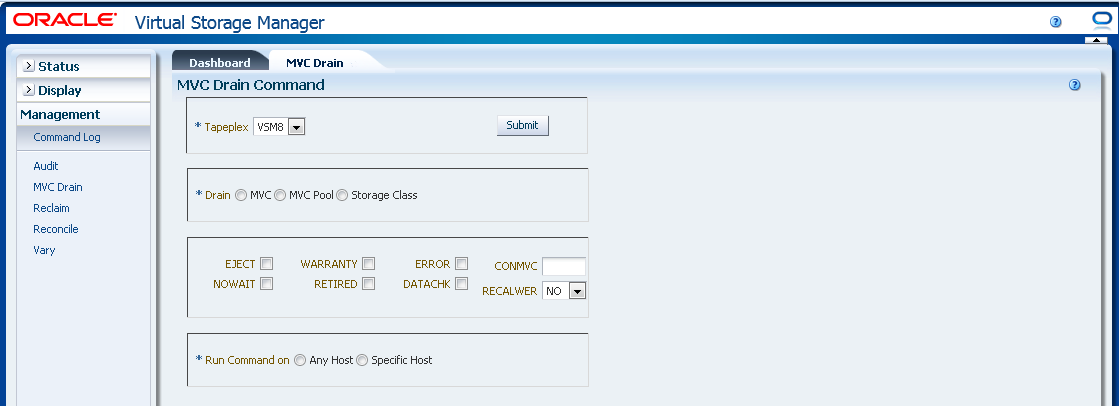
Then select one of the following:
Drain by MVC
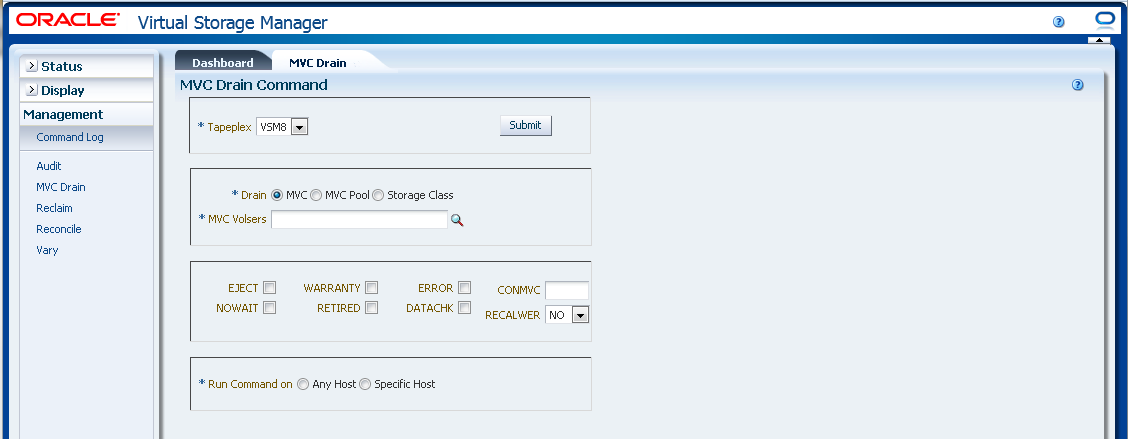
If Drain by MVC was selected, enter the MVC volsers to drain, separated by commas, or click the magnifying glass to display the Select MVCs dialog box.

In the Select MVCs dialog box, type in your search string and then click Apply. The search operator looks for volsers containing the search string.
The search results are listed in the Tapeplex and MVC Volser fields.
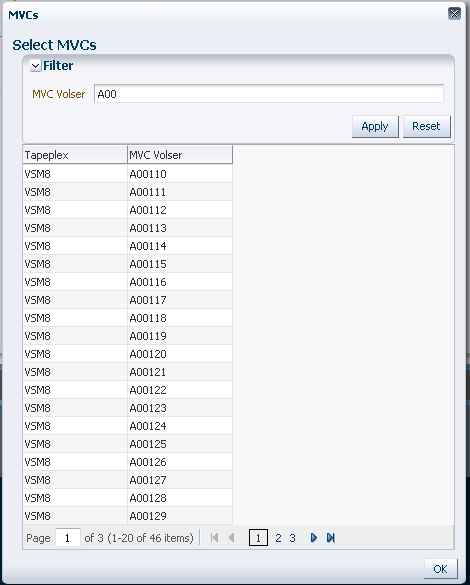
To search again, click Reset to blank the search field and start over.
To select a volser, click the volser to highlight it and then click OK.
To select a range of volsers, click the first volser in the range and then press SHIFT and the down arrow key simultaneously to define and highlight the range of volsers. Then click OK.
When the MVC volsers have been selected, they are displayed in the MVC Drain Command pane.
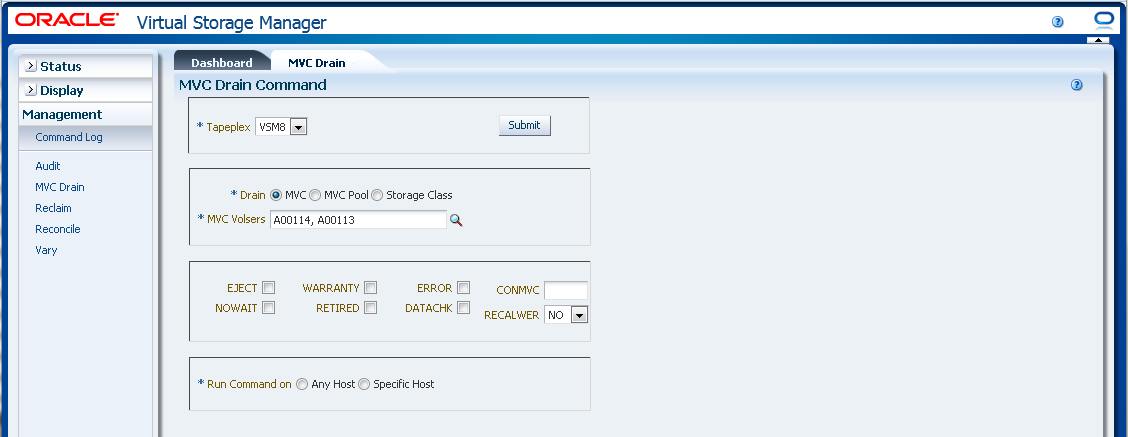
Select optional parameters:
-
EJECT specifies that VTCS virtually ejects the MVC (the MVC will not be used for output) and physically deletes the VTVs. Without this parameter, the VTVs are not physically deleted but the CDS record is updated to show no VTVs on the MVC.
-
WARRANTY selects MVCs with expired warranties.
-
ERROR selects MVCs that are in error.
-
CONMVC specifies the maximum number of MVCs that VTCS concurrently processes for both drain and reclaim. Valid values are 1 to 99. If not specified, the default is the CONMVC value specified on the CONFIG RECLAIM statement.
-
NOWAIT specifies that the utility does not wait for the operation to complete and returns after the request is submitted.
-
RETIRED selects MVCs that are retired.
-
DATACHK selects MVCs that have a data check.
-
RECALWER specifies whether VTCS recalls VTVs with read data checks. NO is the default. YES recalls VTVs with read data checks.
Submit the request:
In the Run Command on field, select Any Host or Specific Host. If you select Specific Host, identify the host in the Server Address field.
Click SUBMIT to continue. A confirmation dialog box is displayed. Click YES to submit the request to the host, or click NO to return to the previous pane.
When the operation is completed, the results are available for display on the "Command Log" pane.
Drain by MVC Pool
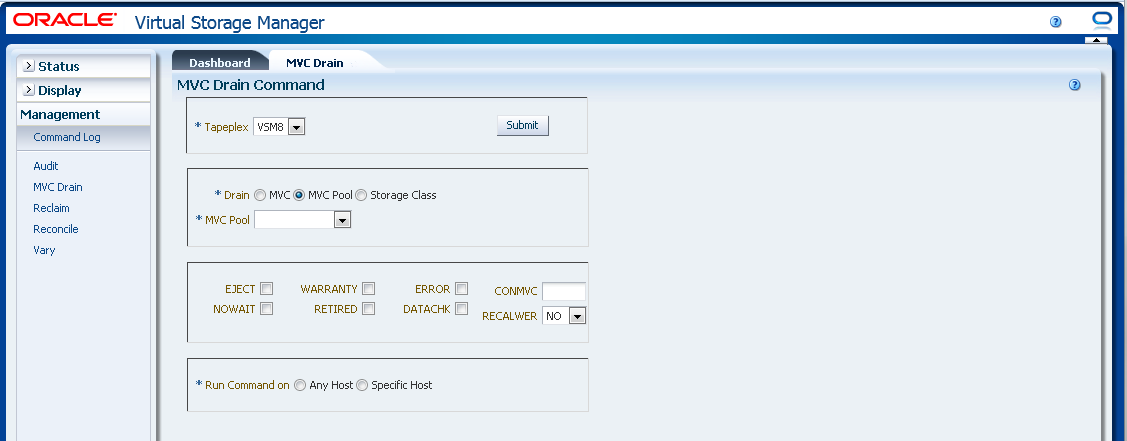
If Drain by MVC Pool was selected, select the MVC Pool to drain on the drop-down list.
When the MVC Pool has been selected, it is displayed in the MVC Drain Command pane.
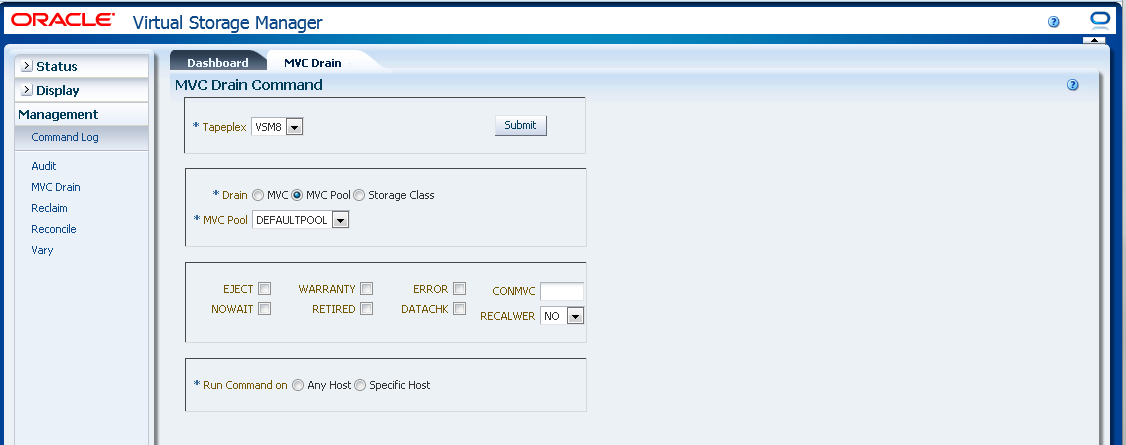
Select optional parameters:
-
EJECT specifies that VTCS virtually ejects the MVC (the MVC will not be used for output) and physically deletes the VTVs. Without this parameter, the VTVs are not physically deleted but the CDS record is updated to show no VTVs on the MVC.
-
WARRANTY selects MVCs with expired warranties.
-
ERROR selects MVCs that are in error.
-
CONMVC specifies the maximum number of MVCs that VTCS concurrently processes for both drain and reclaim. Valid values are 1 to 99. If not specified, the default is the CONMVC value specified on the CONFIG RECLAIM statement.
-
NOWAIT specifies that the utility does not wait for the operation to complete and returns after the request is submitted.
-
RETIRED selects MVCs that are retired.
-
DATACHK selects MVCs that have a data check.
-
RECALWER specifies whether VTCS recalls VTVs with read data checks. NO is the default. YES recalls VTVs with read data checks.
Submit the request:
In the Run Command on field, select Any Host or Specific Host. If you select Specific Host, identify the host in the Server Address field.
Click SUBMIT to continue. A confirmation dialog box is displayed. Click YES to submit the request to the host, or click NO to return to the previous pane.
When the operation is completed, the results are available for display on the "Command Log" pane.
Drain by Storage Class
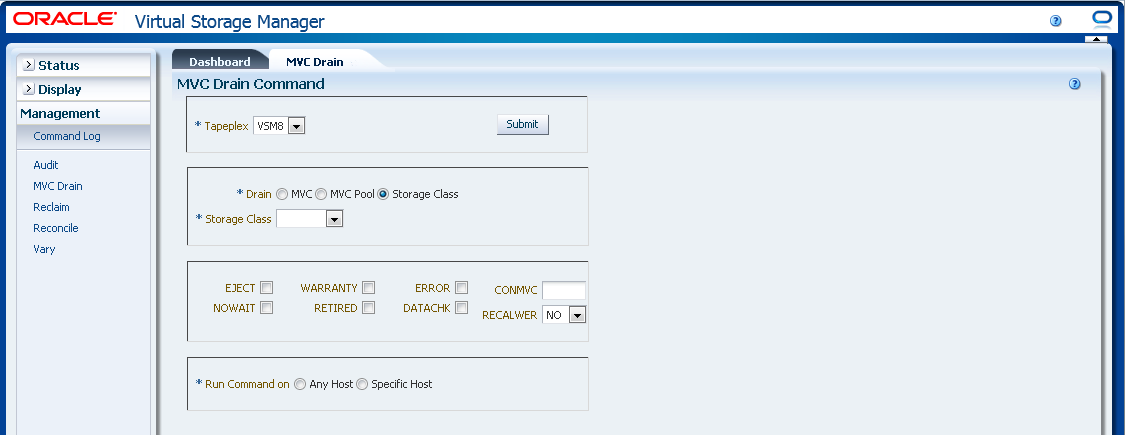
If Drain by Storage Class was selected, select the Storage Class to drain on the drop-down list.
When the Storage Class has been selected, it is displayed in the MVC Drain Command pane.
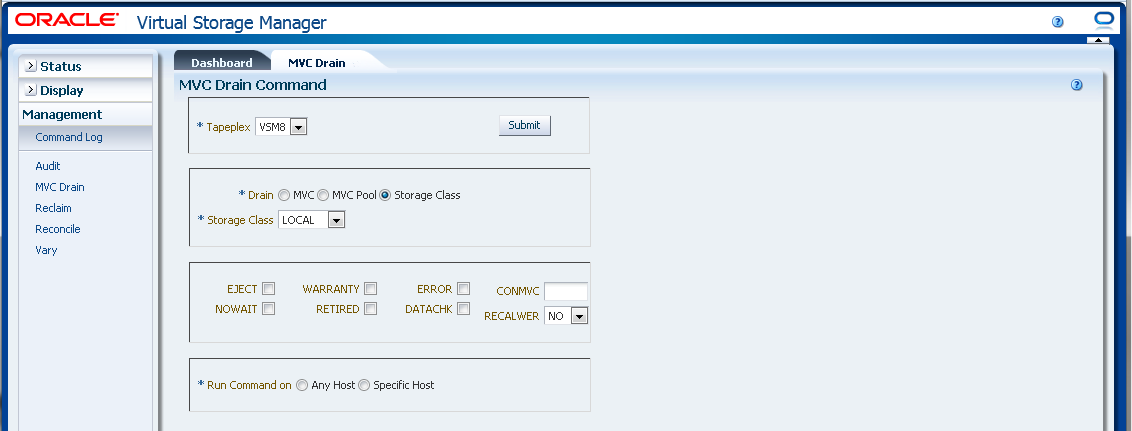
Select optional parameters:
-
EJECT specifies that VTCS virtually ejects the MVC (the MVC will not be used for output) and physically deletes the VTVs. Without this parameter, the VTVs are not physically deleted but the CDS record is updated to show no VTVs on the MVC.
-
WARRANTY selects MVCs with expired warranties.
-
ERROR selects MVCs that are in error.
-
CONMVC specifies the maximum number of MVCs that VTCS concurrently processes for both drain and reclaim. Valid values are 1 to 99. If not specified, the default is the CONMVC value specified on the CONFIG RECLAIM statement.
-
NOWAIT specifies that the utility does not wait for the operation to complete and returns after the request is submitted.
-
RETIRED selects MVCs that are retired.
-
DATACHK selects MVCs that have a data check.
-
RECALWER specifies whether VTCS recalls VTVs with read data checks. NO is the default. YES recalls VTVs with read data checks.
Submit the request:
In the Run Command on field, select Any Host or Specific Host. If you select Specific Host, identify the host in the Server Address field.
Click SUBMIT to continue. A confirmation dialog box is displayed. Click YES to submit the request to the host, or click NO to return to the previous pane.
When the operation is completed, the results are available for display on the "Command Log" pane.